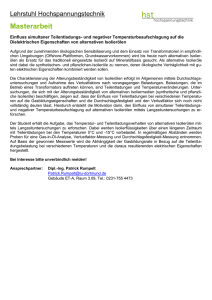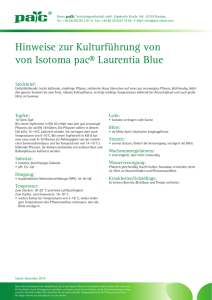Elektrische Leitfähigkeit von Festkörpern bei tiefen
Werbung
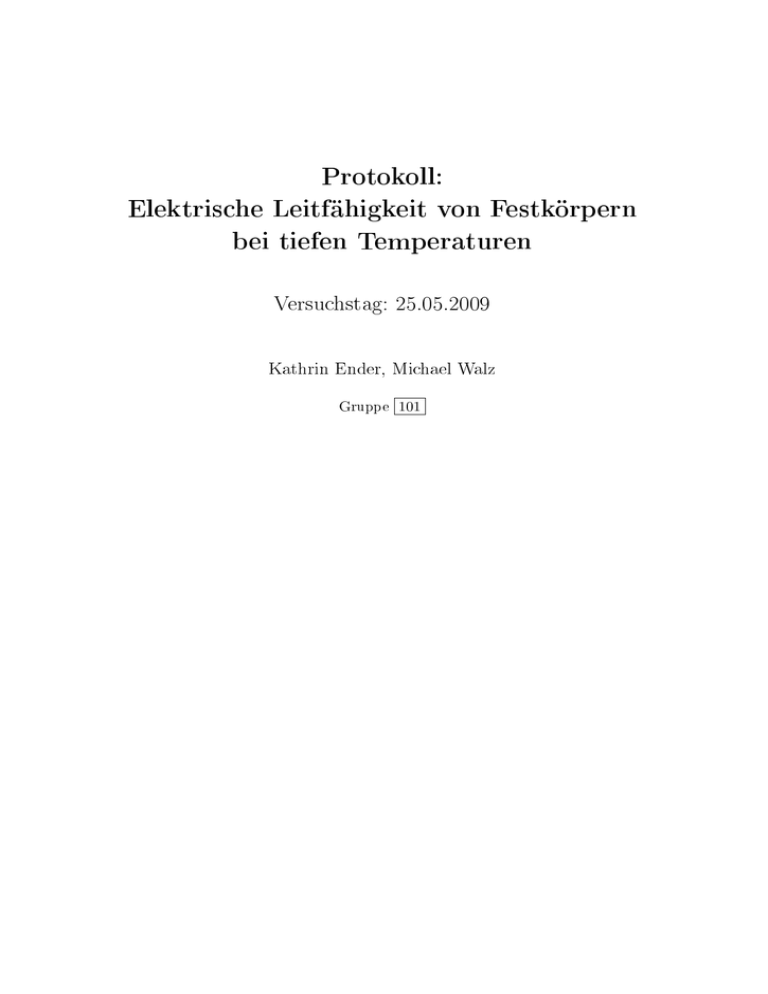
Protokoll:
Elektrische Leitfähigkeit von Festkörpern
bei tiefen Temperaturen
Versuchstag: 25.05.2009
Kathrin Ender, Michael Walz
Gruppe 101
INHALTSVERZEICHNIS
Inhaltsverzeichnis
A
Grundlagen
3
1 Ziel des Versuches
3
2 Elektrischer Widerstand von Metallen
3
2.1
Drude-Modell . . . . . . . . . . . . . . . . . . . . . . . . . . . . . . . . . . . .
3
2.2
Matthiensche Regel . . . . . . . . . . . . . . . . . . . . . . . . . . . . . . . . .
3
2.3
Temperaturabhängigkeit der Phonenstreuung
. . . . . . . . . . . . . . . . . .
3
Grüneisen-Borelius . . . . . . . . . . . . . . . . . . . . . . . . . . . . .
4
2.3.1
3 Leitfähigkeit von Halbleitern
4
3.1
Intrinsischer Halbleiter . . . . . . . . . . . . . . . . . . . . . . . . . . . . . . .
4
3.2
Extrinsischer Halbleiter
4
. . . . . . . . . . . . . . . . . . . . . . . . . . . . . .
4 Supraleiter
B
5
4.1
BCS-Theorie
. . . . . . . . . . . . . . . . . . . . . . . . . . . . . . . . . . . .
5
4.2
Supraleiter im Magnetfeld . . . . . . . . . . . . . . . . . . . . . . . . . . . . .
6
4.3
GLAG-Theorie
7
. . . . . . . . . . . . . . . . . . . . . . . . . . . . . . . . . . .
Experiment
8
5 Versuchsaufbau
8
6 Measurements
9
C
Analysis
10
7 Resistance graph
10
8 Debye temperaturs
11
9 Specic resistance
14
10 Superconductivity of Nb
15
11 Activation energy of Si
17
12 Error estimation
17
12.1 Some serious error estimation . . . . . . . . . . . . . . . . . . . . . . . . . . .
18
Vorbemerkung/preliminary note
Die ersten beiden Teile Grundlagen und Experiment sind auf Deutsch verfasst. Die Auswertung (Analysis) ist wegen englischsprachiger Betreuung in Englisch verfasst.
The rst two parts Basics (Grundlagen) and Experiment are written in German. The
Analysis ist written in Englisch due to an english speaking tutor.
Tiefe Temperaturen
2
Kathrin Ender, Michael Walz
2 ELEKTRISCHER WIDERSTAND VON METALLEN
Teil A
Grundlagen
1 Ziel des Versuches
Es sollen die elektrische Leitfähigkeiten (Kehrwert des elektrische Widerstandes) von Metallen, Halbleitern und Supraleitern und deren Temperaturabhängigkeit untersucht werden.
Als Beispielprobe für die jeweilge Klasse dienen Kuper (Metall), Niob (Supraleiter) und Pdotiertes Silicium (Halbleiter). Gemessen wird im Temperaturbereich
T = 4 − 300 K,
sodass
zur Kühlung sowohl Flüssigsticksto, wie auch Flüssighelium zum Einsatz kommen.
2 Elektrischer Widerstand von Metallen
2.1
Drude-Modell
Im s.g. Drude-Modell wird davon ausgegangen, dass die Elektronen in einem elektrischen
Feld
E
beschleunigt werden und nach einer mittleren Stoÿzeit
τ
mit den Atomrümpfen sto-
ÿen und dabei alle aufgenommene Energie verlieren. Im Mittel stellt sich eine konstante
Driftgeschwindigkeit
vD
ein:
vD =
−eE
·τ
m
Über die Annahme eines lineare Zusammenhangs
j = −envD
Die Streuzeit
τ
j = σE
⇒σ=
folgt dann für die Leitfähigkeit
ne2 τ
m
setzt sich aus den Beiträgen des Gitters (Phononenstreueung;
denen der Störstellen
τSt
σ:
τPh )
und
zusammen:
1
1
1
=
+
τ
τPh
τSt
2.2
Matthiensche Regel
Daraus folgt für den spezischen Widerstand
ρ=
1
τ:
ρ(T ) = ρPh (T ) + ρSt
Diesen Zusammenhang bezeichnet man als Matthiensche Regel. Sie besagt, dass für
T →0
ein von den Störstellen verursachter Restwiderstand dominieren wird.
2.3
Temperaturabhängigkeit der Phonenstreuung
Für das Verhalten des spezischen Widerstand
ρPh (T )
lassen sich für zwei Temperaturbe-
ωD bezeichnet die
~ωD = kB Θ. Θ be-
reiche qualitätive Aussagen treen. Die dabei eingeführte Debyefrequenz
maximale Schwingungsfreuqenz der Phononen im Debyemodell. Es gilt
zeichnet man als Debyetemperatur.
Hochtemperaturlimes (T
À Θ)
Für hohe Temperatur deutlich oberhalb der Debyetemperatur
Θ
gilt:
ρPh ∝ T
Tiefe Temperaturen
3
Kathrin Ender, Michael Walz
3 LEITFÄHIGKEIT VON HALBLEITERN
Tieftemperaturlimes (T
¿ Θ)
Für tiefe Temperatur deutlich unterhalb der Debyetemperatur
Θ
gilt:
ρPh ∝ T 5
Der starke Einbruch beim Übergang zu tieferen Temperatur liegt daran, dass bei
T < Θ
nicht mehr alle Phonen angeregt werden können.
2.3.1 Grüneisen-Borelius
Nach Grüneisen-Borelius gilt für den temperaturabhängigen Widerstand
peraturlimes:
RT (T ) im Hochtem-
(
)
T
RT (T ) = 1,17 − 0,17 RΘ
Θ
Über lineare Regression lassen sich die beiden Parameter (Debyetemperatur
byewiderstand
RΘ
Θ
und De-
bestimmen. Man beachte dabei, dass nach der oben beschriebenen Matt-
hienschen Regel gilt:
Rges (T ) = RRest + RT (T )
3 Leitfähigkeit von Halbleitern
Bei Halbleitern muss man zwischen reinen Halbleitern (z.B. reines Silizium) und verschmutzten Halbleitern unterscheiden. Erstere nennt man intrinsisch, letztere extrinsisch. Extrinsischer Halbleiter werden meist durch p- oder n-Dotierung erstellt und spielen eine zentrale
Rolle in der Halbleitertechnik.
3.1
Intrinsischer Halbleiter
In einem reinen Halbleiter müssen die Elektronen erstmal eine Energielücke
Eg
zum näch-
ten Band überwinden, da weder ein volles Valenz noch ein leeres Leitungsband zum Ladungstransport beitragen. Dementsprechend ist die Temperaturabhängigkeit der Leitfähigkeit durch den Boltzmanfaktor dominiert:
[
]
Eg
σ ∝ exp −
2kT
[
]
Eg
R = Rmin · exp +
2kT
3.2
Extrinsischer Halbleiter
Bei extrinsischer Halbleitern dominieren im Tief- unter Mitteltemperaturbereich die Eekte,
die durch die Störstellen (Donater oder Akzeptoren) erzeugt wurden. Erst im Hochtemperaturlimes nähert sich der extrinsische Halbleitern dem intrinsischen Halbleiter an.
Im Beispiel eines n-dotierten Halbleiters, also ein Halbleiter mit Elektronenüberschuss,
erfolgt die gesamte Leitung praktisch nur durch Elektronen:
σ = enµ
Sowohl die Beweglichkeit
pertatur
T
µ,
wie auch die Ladungsträgerdichte hängt hierbei von der Tem-
ab:
T ÀΘ
Tiefe Temperaturen
µ ∝ T −3/2
| {z }
T ¿Θ
; Phononenbeitrag
4
µ ∝ T +3/2
| {z }
; Störstellenbeitrag
Kathrin Ender, Michael Walz
4 SUPRALEITER
Die komplizierte Abhängigkeit der Ladungsträgerkonzentration ist in folgenden Schaubild
dargestellt:
α:
Im Bereich sehr tiefer Temperaturen liegt
das Ferminiveau auf dem Niveau der Donnatoren. Mit
Ed
im Bild ist der Abstand
zum Leitungsband gemeint:
γ:
Bei
Raumtemperatur
sind
Ed = EL −ED
pratische
alle
Störstellen ionisiert und der intrinsische
Beitrag fällt noch nicht ins Gewicht. Deshalb ist hier ein Abachen zu erkennen.
δ:
Im Hochtemperaturlimes nähert sich der extrinsische
Halbleitern
dem
intrinsischen
Halbleiter an.
4 Supraleiter
Im Versuch werden wir auÿerdem Niob als Beispiel für einen Supraleiter untersuchen. Das Besondere an Supraleitern ist, dass sie unterhalb einer bestimmten Sprungtemperatur praktisch
keinen elektrischen Widerstand aufweisen. Das Phänomen der Supraleitung wurde zwar bereits 1908 experimentell entdeckt (heike Kamerlingh Onnes), theoretisch jedoch erst 1950/51
durch Fröhlich und Bardeen beschrieben.
4.1
BCS-Theorie
Die starke Änderung der elektrischen Leitfähigkeit deutet darauf hin, dass im System ein Ordnungsvorgang stattnden muss. Die BCS-Theorie (Bardeen, Cooper, Schrieer, 1957) erklärt
diesen Ordnungsvorgang durch einen anziehende Wechselwirkung zwischen zwei Elektronen.
Die Existenz einer solchen Wechselwirkung kann man sich so erklären, dass ein Elektron im
Atomgitter zu einer Polarisation im Atomgitter führt, da die positiven Ionenrümpfen leicht
aus ihren Ruhelagen ausgelenkt werden können. Ein anderes Elektron spürt diese Polarisation und damit eine Anziehung in Richtung des anderen Elektrons. Bei dieser Wechselwirkung
handelt es sich natürlich um eine indirekte Austauschwechselwirkung. Die Phononen (Gitterschwingungen) stellen dabei die Austauschteilchen dar.
Zwei über Phononen wechselwirkende Elektronen können sogar einen gebundenen Zustand ein sogenanntes Cooper-Paar bilden. Die Elektronen in einem solchen Cooper-Paar
müssen einen betragsmäÿig gleichgroÿen aber entgegengesetzten Impuls sowie einen entgegengesetzten Spin bestitzten (nur dies führt zu einer Absenkung der Energie und damit zu
einem stabilen Zustand).
Die Cooper-Paare sind also bosonische Teilchen (Spin=0) mit einem Gesamtimpuls von
Null. Fordert man nun noch, dass bei tiefen Temperaturen alle Cooper-Paare denselben Zustand besetzten, so kann man das Phänomen der Supraleitung erklären. Wird ein elektrisches
Feld an das System angelegt, so werden alle Cooper-Paare beschleunigt. Da sie jedoch alle
Tiefe Temperaturen
5
Kathrin Ender, Michael Walz
4 SUPRALEITER
im gleichen Zustand sein sollen, ist es für ein einzelnes Cooper-Paar nicht erlaubt Impuls mit
dem Gitter auszutauschen. Das bedeutet eine unendliche Leitfähigkeit.
Dieser supraleitende Zustand existiert allerdings nur unterhalb einer kritischen Stromdichte. Bei einer zu hohen Stromdichte übersteigt die durch das elektrische Feld aufgenommene
Energie die Bindungsenergie der Cooper-Paare, diese werden aufgebrochen und das System
geht in einen normalleitenden Zustand über.
4.2
Supraleiter im Magnetfeld
Bendet sich ein Supraleiter in einem Magnetfeld, so wird durch dieses Feld ein Dauerstrom
induziert. Durch diesen Dauerstrom, der an der Oberäche des Supraleiters ieÿt, wird das
äuÿere Magnetfeld aus dem Supraleiter verdrängt. Diesen Eekt bezeichnet man als MeissnerOchsenfeld-Eekt. Aus der Erklärung im vorherigen Abschnitt ist klar, dass es ein kritisches
Magnetfeld geben muss, bei dem gerade der kritische Strom ieÿt, der den supraleitenden
Zustand zerstört.
Man unterscheidet zwei Arten von Supraleitern:
•
•
Supraleiter 1.Art: bis zu einem kritischen Feld
Bcth
tritt der Meissner-Eekt auf
Supraleiter 2.Art: bei Feldern bis zum unteren kritischen Feld
Bc1
zeigen sie den
Meissner-Eekt, gehen dann allerdings in die Shubnikov-Phase über, bis beim oberen
kritischen Feld
Bc2
der supraleitende Zustand zerstört wird
Der Meissner-Eekt lässt sich auch erklären, wenn man den Supraleiter als idealen Diamagneten betrachtet. Durch die Abschirmströme, die in der Oberächenschicht mit der Dicke
λ
(Londonsche Eindringtiefe) ieÿen wird eine Magnetisierung erzeugt, die das äuÿere Ma-
gnetfeld vollständig kompensiert:
χ=
µ0 M
= −1
B
Supraleiter 2.Art verhalten sich zunächst auch wie ideale Diamagnete. Ab dem unteren kritischen Feld kann das Magnetfeld in sogenannte Flussschläuche eindringen, was zu einem
monotonen Abfall der Magnetisierung führt. Der Zusammenhang zwischen äuÿeren Magnetfeld und Magnetisierung für Supraleiter 1. und 2.Art sind in folgendem Plot dargestellt:
Eine Beschreibung für den Zusammenhang zwischen dem unteren
schen Feld
Bc2
Bc1
und oberen kriti-
liefert die GLAG-Theorie (Ginsburg, Landau, Abrikosov, Grokov)
Tiefe Temperaturen
6
Kathrin Ender, Michael Walz
4 SUPRALEITER
4.3
GLAG-Theorie
Natürlich ist die Eindringtiefe
λ,
die angibt ab welcher Tiefe das Feld auf 1/e-tel abgefallen
ist, temperaturabhängig. Es gilt folgender Zusammenhang:
λ(T )
=
λ(0)
(
(
1−
T
TC
)4 )−1/2
Für das obere kritische Feld gilt:
Bc2 (T ) =
Wobei
Φ0
2 (T )
2πξGL
Φ0 = 2,07·10−15 Vs das Fluÿquant ist und ξGL (T ) die Ginsburg-Landau-Kohärenzlänge,
für diese gilt:
ξ0
ξGL (T ) = √ GL
1 − T /TC
Damit ergibt sich für das obere kritische Feld eine lineare Temperaturabhängigkeit:
Bc2 (T ) =
Und aus der Steigung
S = dB/dT |TC
(
)
Φ0
T
·
1
−
0 )2
2π(ξGL
TC
nahe der Sprungtemperatur lässt sich die Kohärenz-
länge bestimmen:
√
0
ξGL
=
−Φ0
2πSTC
Aus dieser kann man widerrum die mittlere freie Weglänge bestimmen. Für Niob gilt:
0
ξGL
=
Tiefe Temperaturen
√
39nm · l
7
Kathrin Ender, Michael Walz
5
VERSUCHSAUFBAU
Teil B
Experiment
5 Versuchsaufbau
Der Versuch besteht im wechsentlichen aus dem im folgenden Bild schematisch dargestellten
Kryostaten:
Tiefe Temperaturen
8
Kathrin Ender, Michael Walz
6 MEASUREMENTS
Der Kryostat besteht aus einem doppelwandigen äuÿeren und inneren Galsdewar. Der
äuÿere Glasdewar wird mit üssigem Sticksto befüllt. Auf diese Weise erreichen wir Temperaturen bis zu 80K. Um auch tiefere Temperaturen zu erreichen wird in den inneren Galsdewar
üssiges Helium gefüllt. Im inneren des Kryostaten bendet sich ein Probenbecher auf dem
unsere drei Proben befestigt sind. Eine supraleitende Spule dient zur Erzeugung des Magnetfeldes um die Abhängigkeit der Sprungtemperatur von Niob vom äuÿeren Magnetfeld zu
untersuchen.
Bei den Proben handelt es sich um eine Kupferprobe (Metall), eine Niobprobe (Supraleiter) und p-dotiertes Silizium (reiner Halbleiter).
Zur Temperaturmessung werden sowohl ein Platin- als auch ein Kohlethermometer verwendet. Bei Temperaturen über 30K kann das Platinthermometer verwendet werden, unter
30K muss das Kohlethermometer verwendet werden.
6 Measurements
We mesaured the resistances at roomtemperature, in order to check wether they matched the
values given in the manual. We got:
• RCu = 2,18Ω
• RNb = 50,50Ω
• RSi = 0,09Ω
• RPt = 107,6Ω
We then cooled the samples, by pouring liquid nitrogen into the kryostat. Since the cooling is
a slow process, we could measure the resistances at certain temperatures in thermal equilibrium. To measure the temperature we used a platin thermometer and a carbon thermometer.
We used the Platin thermometer to measure temperatures above 55K, and the Carbon thermometer below that. Since the boiling temperature of nitrogen is 77K, we had to use liquid
helium to achieve lower temperatures. The helium is put in the inner dewar. After we applied
the helium the temperature decreased noticably faster, so that we weren't able to take a lot
of values.
In order to determine the transition temperature of the niob, which is about 10K, we used
a heater to heat the sample from somewhere below the transition temperature to above the
transistion temperature. While turning the heater o again, we plotted the resistance over
the temperature using a x-y-plotter. We did that for dierent magentic elds generated by a
superconducting coil.
After that we used the heater to increase the temperature again and took resistance values
while the temperature was increasing. At about 30K we started pumping the helium with a
vacuum pump. At about 55K we switched back to the platin thermometer again.
Tiefe Temperaturen
9
Kathrin Ender, Michael Walz
7
RESISTANCE GRAPH
Teil C
Analysis
In the experiment we measured the resistance by sending a current of I = 1 mA through the
mV. Because of R = UI the value of the voltage in mV
corresponds directly to the value of the resistance in Ω.
sample and measuring the voltage in
In most experiments we noted the resistance values of the three samples (Cu, Nb and Si)
while waiting for the temperature to change. This values we digitized and passed them to
1
gnuplot . The resistance values of the thermometers had to be converted by some linear
(or non-linear) formulas given in the manual. We did this calculation directly in gnuplot
with the option using
2
while plotting the data.
7 Resistance graph
First of all one should show the Resistance
R
depending on the Temperature
T.
For Cu we
got the following result:
Resistance of Cu
2.5
Resistance R in Ω
2
1.5
1
0.5
0
0
50
100
150
200
Temperature T in K
250
Because we rst measured from high temperatures down to low and later the other direction there are some values dierent in the middle. Since the temperature was decreasing too
fast in the rst series the measured resistance is too high compared to the real resistance.
The temperature wasn't spatial uniform.
If we look at Nb we get the following picture:
1 http://www.gnuplot.info/
2 http://www.gnuplot.info/docs/node133.html
Tiefe Temperaturen
10
Kathrin Ender, Michael Walz
8 DEBYE TEMPERATURS
Resistance of Nb
60
Resistance R in Ω
50
40
30
20
10
0
0
50
100
150
200
Temperature T in K
250
In both (Cu and Nb) one can see the linear dependence in the high temperatur domain.
One can also see the constant rest resistance in Nb (if we ignore the superconducting state).
In Cu the rest resistance is so small that one can hardly see it. Nevertheless it exists at about
R = 0,018Ω.
At Nb one can also see the superconducting state at low temperatures where
the resistance is exactly zero.
Totally dierent from this to metals is Si, an semicondutor:
Resistance of Si
100
Resistance R in Ω
10
1
0.1
0.01
10
100
Temperature T in K
In contrast to Cu and Nb the resistance is decreasing with increasing temperature. That's
because of the nite band gap between valence band and conduction band (as described
above in the preparation). Be aware that the scaling is logarithmical on both axis. The one
value at about
20 K
that's much higher than the others is due to the fact described at Cu.
This single value was measured when we cooled down the experiment. Because this happened
really fast at the end, there arose this lonely point.
8 Debye temperaturs
We want to calculate the Debye temperature
Θ and the Debye resistance RΘ
for Cu and Nb.
So we simple need a linear regression for high temperatur values and insert the results into
Tiefe Temperaturen
11
Kathrin Ender, Michael Walz
8 DEBYE TEMPERATURS
the Grüneisen-Borelius equation:
(
)
T
RT (T ) = 1,17 − 0,17 RΘ
Θ
We have to be careful because
RT
is the whole resistance minus the rest resistance. So
the formula for high temperatures ist:
RΘ
R(T ) = 1,17
T + (−0,17RΘ + RRest )
|
{z
}
| {z Θ}
Y
M
3
As rest resistance we took the last value we measure at low temperatures . We simply got:
RRest,Cu = 0,018Ω
We used only values with
T > 220 K
RRest;Nb = 21,30Ω
and for Cu we got for the linear regression:
Resistance of Cu with T > 220 K
2.3
2.2
measurement
linear regression
Resistance R in Ω
2.1
2
1.9
1.8
1.7
1.6
1.5
220
230
240
250
260
Temperature T in K
270
280
290
(
)Ω
MCu = 0,00932 ± 9,8 · 10−6
K
YCu = (−0,4781 ± 0,002) Ω
This statistical errors are so small, there is no sense in calculating the errors of
Θ and RΘ
by error propagation using these errors because all the systematical errors in the experiment
4
are much larger.
Accourding to aboves formula we can calculate:
RΘ,Cu =
RRest,Cu − YCu
= 2,92 Ω
1,17
ΘCu = 1,17
RΘ,Cu
= 366 K
MCu
If we do the same with Nb we get:
3 for
4 for
Nb naturally before the superconducting state
example the inaccuracy of the measuring instrument
Tiefe Temperaturen
12
Kathrin Ender, Michael Walz
8 DEBYE TEMPERATURS
Resistance of Nb with T > 220 K
52
measurement
linear regression
51
Resistance R in Ω
50
49
48
47
46
45
44
43
220
230
240
250
260
Temperature T in K
270
280
290
(
)Ω
MNb = 0,00932 ± 9,8 · 10−6
K
RRest,Nb − YNb
=
= 13,1 Ω
1,17
YNb = (−0,4781 ± 0,002) Ω
RΘ,Nb
ΘNb = 1,17
RΘ,Nb
= 139 K
MNb
Now we can look at a normalized picture of the resitance of Cu and Nb:
Resistance of Cu and Nb in reduced units
Cu
Nb
Grüneisen−Borelius
Resistance (R−RRest)/RΘ
2
1.5
1
0.5
0
−0.17
0
In this graph the values of
0.5
Θ and RΘ
1
1.5
Temperature T/Θ
2
are used as natural units. One can see that both metals
satises the Grüneisen-Borelius equation at high temperatures. At low temperaturs they
both dier and aspire to their rest resistance
RRest .
Since we were interested in the power p in the depencence
two plots
ln R
versus
ln T .
Tiefe Temperaturen
The slope of the graph would be
13
R ∝ Tp
for small
T,
we did
p.
Kathrin Ender, Michael Walz
9 SPECIFIC RESISTANCE
Logarithmic resistance ln(R−RRest) ; R in Ω
Finding the power rule of Cu
8
measurement
linear regression
6
4
2
0
−2
−4
−6
−8
−10
−12
2
2.5
3
3.5
4
4.5
5
Logarithmic temperature ln(T) ; T in K
5.5
6
5.5
6
Logarithmic resistance ln(R−RRest) ; R in Ω
Finding the power rule of Nb
10
measurement
linear regression
8
6
4
2
0
−2
−4
−6
2
2.5
3
3.5
4
4.5
5
Logarithmic temperature ln(T) ; T in K
For the lineare regression we used only the left part of the graph because the
only valid for small
T.
Tp
rule is
But we also cut some points at the left because they were obvious
nonsense. I think one could best see at the picture itself which values were choosen in order
to do the linear t.
The results of the t were:
pCu = 4,33 ± 0,17
pNb = 3,25 ± 0,06
There is a derivation to the theoretical value
p = 5,
but nevertheless this is quite a great
conrmation that some freedom of the phonons is frozen at low temperature.
9 Specic resistance
We want to calculate the specic resistance at
4,2 K for Cu and at 12 K for Nb. This essentially
means that we have to take the rest resistance as derived above:
RRest,Cu = 0,018Ω
Tiefe Temperaturen
RRest;Nb = 21,30Ω
14
Kathrin Ender, Michael Walz
10 SUPERCONDUCTIVITY OF NB
In order to calculate the specic resistance
σ
and the mean free path
λ, one need the cross
section and the length/resistance of the metals. They are given in the preparation folder as:
ACu =
π
· (0,1 mm)2 = 7,854 · 10−3 mm2 = 7,854 · 10−9 m2
4
ρCu;T =300K = 0,017 · 10−6 Ωm
First we calculated the length of the Cu sample out of the values
T ≈ 300 K. The resistance
at such high temperaturs can be calulated by the Grüneisen-Borelius-equation:
R(T = 300 K) =
Since the general formula is
(
)
300 K
1,17
− 0,17 RΘ,Cu + RRest = 2,32Ω
ΘCu
R=
ρ·L
A we can calculate the Length of Cu to:
LCu =
Together with the given value of
path of Cu at
R300K · ACu
= 1,07 m
ρCu;T =300K
ρλ = 658,7 · 10−18 Ωm2
we can calculate the meen free
T = 4,2 K:
λCu =
ρλ
ρλ
= R·A = 4,99 µm
ρ
L
This is quite high, but quite reasonable because at such low temperatur the every possible
collision partner is partly frozen and that's why there are little collisions.
The dimensions and the value of
ρλ
at 12K of Nb is given by the manual by:
ANb = 0,9 mm ·40 nm = 3,6 · 10−11 m2
LNb = 8 mm
ρλ = 375 · 10−18 Ωm2
Here we can directly calculate the mean free path
λNb =
λ
of Nb:
ρλ
ρλ
= R·A = 3,91 nm
ρ
L
That's really small, expecially when one realises that some Kelvin below in the superconducting state
λ
grows to innity. So we see that superconductivity really needs a abrupt
phase transformation.
10 Superconductivity of Nb
In order to obtain the temperature dependency of the upper critical eld
Bc2 ,
we applied
a magentic eld using a superconducting coil. We used a x-y-plotter to plot the resistance
of Niob over the temperature. Starting form about 10K we then decreased the temperature
until the resistance had dropped to zero. From those plots we get the critical temperature
of Niob for the diernt magnetic elds we applied. As critical temperature we always took
the temperature at which the resitance had dropped to half its initial value. Since the we
know the current we sent through the coil we can calculate the magnetic eld according to
the follwing formula:
n
B = µ0 I
2l
(
x + l/2
x − l/2
√
−√
r2 + (x + l/2)2
r2 + (x − l/2)2
n = 4019 is the number of turns. r = 1,925cm is the average
l = 10cm is the length of the coil. If we assume that our sample
Tiefe Temperaturen
)
15
radius of the single layers.
is in the middle of our coil,
Kathrin Ender, Michael Walz
10 SUPERCONDUCTIVITY OF NB
so in the homogenous eld, we can set
x = 0. Using this formula and the formula to calculate
the temperature corresponding to the voltage measured by the thermometer, we obtain the
critical Temperature and the corresponding magnetic eld.
Another way to interpret out measurements is that we obtained the upper critical eld
as a function of temperature.
In the following table the upper critical edls in dependency of the temperature are listed.
The relation is also shown in following graph.
temperature dependency of upper critical field
600
I
500
BC2(T) in mT
400
300
200
100
0
7.6
7.7
7.8
7.9
8
8.1 8.2
T in K
8.3
8.4
8.5
in A
Bc2
in mT
T
in K
0
0
8,57
1,5
70,7
8,42
3
141,4
8,28
4,5
212,1
8,17
6
282,8
8,04
7,5
353,5
7,94
9
424,2
7,84
10,5
494,9
7,74
12
565,6
7,64
8.6
As we expected the the critical temperature is lower the higher the magnetic eld. As we
already explained in the preparation the magnetic eld induces a current on the surface of the
superconductor. The superconductivity switches to normal conducticity when the Cooperpairs are broken which happens if the bounding energy of the Cooper-pairs is available. The
applied magnetic elds provides some of the energy needed to achieve an energy equivalent to
the bounding energy. Therefore a lower temperature is sucient to break the Cooper-pairs.
In order to calculate the coherence length
to
TC = 8,57K.
we tted a line to the three points closest
We only used those points, because we know that the coherence lenght can
be calculated, when the slope
S
near
TC
(0)
is known.
ξGL =
with
(0)
ξGL ,
√
−φ0
2πSTC
φ0 = 2,07 · 10−15 Vs; using gnuplot we obtained via linear regression: S = (−481 ± 19) mT
K
(0)
⇒
ξGL = (8,94 ± 0,18)ns
(0)
ξGL we used error propagation:
¯
¯
¯ ∂ξ (0) ¯
1 (0) ∆S
¯ GL ¯
=¯
¯ · ∆S = ξGL ·
¯ ∂S ¯
2
S
To determine the statistical error of
(0)
∆ξGL
Now that we know the coherence length we can calculate the free path
(
(0)
)2
λNb = ξGL
λNb :
/ (39nm) = (2,05 ± 0,08)nm
(0)
∆λNb = 2λNb
∆ξGL
(0)
ξGL
The value diers considerably from our rst value, which might be an indicator for systematic errors in one of the methods.
Tiefe Temperaturen
16
Kathrin Ender, Michael Walz
12 ERROR ESTIMATION
11 Activation energy of Si
Since we want to determine the activation energy
Ea ,
(
σ = C · exp −
σ
Ea
2kT
we need the following relation:
)
is the conductivity and can be calculated via:
σ=
(
⇒ ln
1
R
)
=
l
R·A
−Ea 1
· − ln
2k T
(
l
AC
)
So in a certain temperature intervall we should be able to make a linear t to the graph of
ln(1/R) over 1/T . With the slope S
we can then calcualte the activation energy. Since Si is a
semiconductor we expect the linear domain to be at low temperatures. In the following plot
we tted a line to all data in the intervall
0K < T < 10,2K.
It can easly be seen in the graph
that there is a linear relation for this intervall.
Activation Energy
5
used in regression
4
3
ln(1/R)
2
1
0
-1
-2
-3
-4
0
0.02
0.04
0.06 0.08 0.1
1/T in 1/K
0.12
0.14
0.16
For the slope we obtain:
S = (−63 ± 4)K
Thus we get for the activation energy:
Ea = −2k · S;
with
k = 8,617343
eV
K
⇒ Ea = (10,9 ± 0,7)meV
12 Error estimation
We did very few error estimation in the above calculation because most times it didn't make
sense to use some small statistical errors of less than
Tiefe Temperaturen
17
1% to calculate a total error. A detailed
Kathrin Ender, Michael Walz
12 ERROR ESTIMATION
error calculation wasn't possible because the manual did not dene any errors for most values.
5
d = 0,1 mm. If we use
d = 0,1 ± 0,1 mm, which means an
For example , the diameter of Cu was given by
(as learned) an error
of one scale division, we had to use
error of
12.1
100%.
Some serious error estimation
Let's assume all measuring instruments delivered an error of about
1%.
We should also
assume an error because the temperature balance in the experiment wasn't that good. Let's
say something about
5%.
If we want to do a very rough estimation for the maximal error
we could do the following: to the error of the resistance measurement both the error of the
current measurement (1%) and the error of the voltage measurement (1%) contribute. Let's
say 2% in total. For every resistance value we also need a temperature value that we obtain
by measuring another resistance. So we get another 2%. So in total, one could estimate an
systematical error of about
5 it's
10%.
really an extreme example
Tiefe Temperaturen
18
Kathrin Ender, Michael Walz
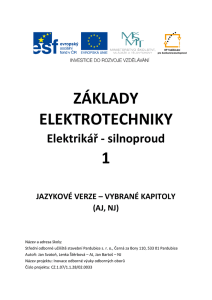
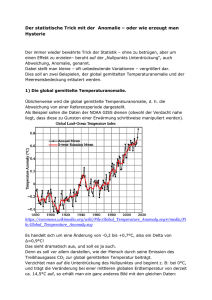
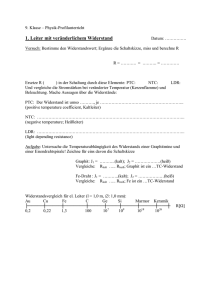
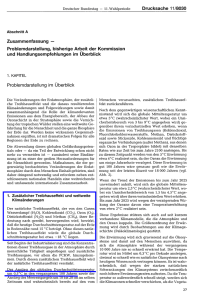
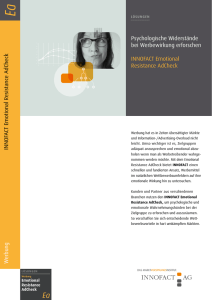
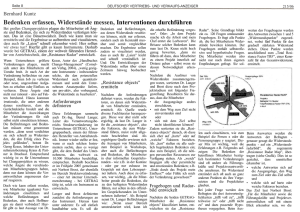
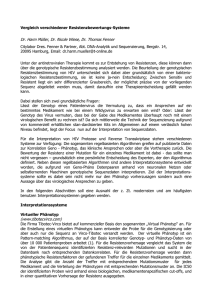
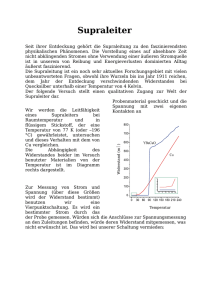
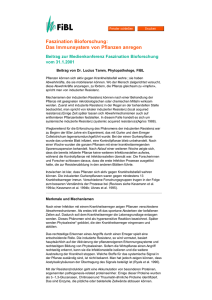
![Supraleiter und die medizinische Anwendu[...]](http://s1.studylibde.com/store/data/003092239_1-43bc47d42b68655161838cc1f37f764f-300x300.png)
